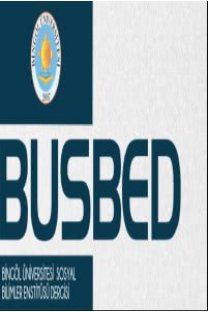TÜMELLER VE ÖZELLİKLER ARASINDAKİ İLİŞKİNİN REALİZM VE TROP KURAMLARI AÇISINDAN DEĞERLENDİRİLMESİ
“Kar beyazdır” gibi bir önermede karın beyaz olduğunu neye dayanarak söyler ve karın beyaz olduğunu nasıl biliriz? Bu türden bir önermenin, yani karın neden beyaz olduğunun cevabı farklı kuramlarca ele alınmıştır. Örneğin realist kuramlar beyazlık diye bir tümelin var olduğunu iddia ederken, trop kuramlar karın beyaz olma özelliğine sahip olmasından daha doğru bir ifadeyle beyaz olma tropuna sahip olduğundan dolayı beyaz olarak tanımladığını iddia eder. Her iki kuramın cevaplarının arasındaki en temel ayrım, biri tümel diye bir şeyin varlığını kabul ederken (Realist kuramlar) bir diğeri karın beyaz olduğunu söylemek için bir tümele gerek olmadığını (Trop kuramları) kabul etmesidir. Bunun yanında tümel ve özellik arasındaki ilişki de benzer bir şekilde sorunludur. Realist kuramlarda, hepsinde değil, özellik ve tümel aynı şey olarak kabul edilirken, nominalist kuramlarda tümel ve özelliklerin varlıkları dahi kabul edilmez. Bunun yanında trop kuramları, tümeli reddetmelerine rağmen özelliklerin var olduğunu kabul eder. Bu çalışmada tümel ve özellik arasındaki ilişki realist ve trop kuramlarının iddiaları bağlamında değerlendirilecektir. Bu değerlendirmelerin nihayetinde nesneye ilişkin bilgimizin izahında trop kuramların neden başarılı oldukları açıklanacaktır.
THE EVALUATION OF THE RELATION BETWEEN UNIVERSALS AND PROPERTIES IN TERMS OF REALISM AND TROP THEORIES
On what grounds do we say the proposition “Snow is white” is true or how do we know that snow is white? There are different approaches to answer and explain why snow is white from different perspectives. For instance, according to realist theories there is a whiteness universal to explain why snow is white. However, this claim is unacceptable for tropes theories, and to them, there is not such a universal as whiteness. According to tropes theories, the answer of how we know snow is white is that there is the property of being white and by means of this property, we know the reason why snow is white. The relation between universals and properties is also problematic. While in most realistic theories, the universal and property are accepted to be the same, the existence of universals and properties is not accepted in nominalist theories. On the other hand, even though tropes theories deny universals, they accept the existence of properties. In this study, the relation between universals and properties will be evaluated in realist and tropes theories. As a result of this analysis, the reason why tropes theories are more successful approach than other theories concerning our knowledge of objects will be expounded.
___
- ARMSTRONG, David Malet (2004), Properties, Ed. D.H. Mellor, Alex Oliver, Oxford, Oxford University Press.
- ARMSTRONG, David Malet (2004), Against ’Ostrich’ Nominalism: A Reply to Michael Devitt, Properties, Ed. D.H. Mellor, Alex Oliver, Oxford, Oxford University Press.
- CAMPBELL, Kirsten (2004), The Metaphysic of Abstract Particulars, Ed. D.H. Mellor, Alex Oliver, Oxford, Oxford University Press.
- DALY, Chris (2004), Tropes, Ed. D.H. Mellor, Alex Oliver, Oxford, Oxford University Press.
- DENKEL, Arda (1986), Nesne ve Doğası, İstanbul,Metis Yayınları.
- DENKEL, Arda (2008), Nesne ve Özellik, Çev. Celal A. Kanat, İstanbul, Doruk Yayınları.
- KUŞCU, Egemen Seyfettin (2015), Tümeller Sorunu ve Güncel Kuramlarının Çözümlerinin Karşılaştırılması, Felsefe Arkivi, Sayı 42.
- LEWİS, David (2004), New Work For a Theory of Universals, Ed. D.H. Mellor, Alex Oliver, Oxford, Oxford University Press.
- MELLOR, David Hugh (2004), Properties and Predicates, Ed. D.H. Mellor, Alex Oliver, Oxford, Oxford University Press.
- PLATON (2007), Symposion, Çev. Eyüp Çoraklı, İstanbul, Kabalcı Yayınları.
- RUSSELL, Bertrand (1994), Felsefe Sorunları, Çev. Vehbi Hacıkadiroğlu, İstanbul, Kabalcı Yayınevi.
- WILLIAMS, Donald Cary (2004), On the Element of Being: I, Ed. D.H. Mellor, Alex Oliver, Oxford, Oxford University Press.
- ISSN: 1309-6672
- Yayın Aralığı: Yılda 2 Sayı
- Başlangıç: 2011
- Yayıncı: Yusuf Aydoğdu
Sayıdaki Diğer Makaleler
TÜMELLER VE ÖZELLİKLER ARASINDAKİ İLİŞKİNİN REALİZM VE TROP KURAMLARI AÇISINDAN DEĞERLENDİRİLMESİ
GÜTSEL ÖZDEŞLEŞME VE ÖRGÜTSEL SİNİZM ARASINDAKİ İLİŞKİ: ULUSAL YAZINDA BİR META-ANALİZ ÇALIŞMASI
HÜSEYİN CAHİT YALÇIN’IN 1946 TARİHLİ RAPORU ve BASIN TARİHİMİZDEKİ ÖNEM
SOSYAL SERMAYENİN MOTİVASYONA ETKİSİ: KASTAMONU ÜNİVERSİTESİ ÖRNEĞİ
Erdi PETEK, Sahra SAYĞAN TUNÇAY
ALTERNATİF YATIRIM ARAÇLARININ MENKUL KIYMETLER BORSASI İLE ETKİLEŞİMİ
